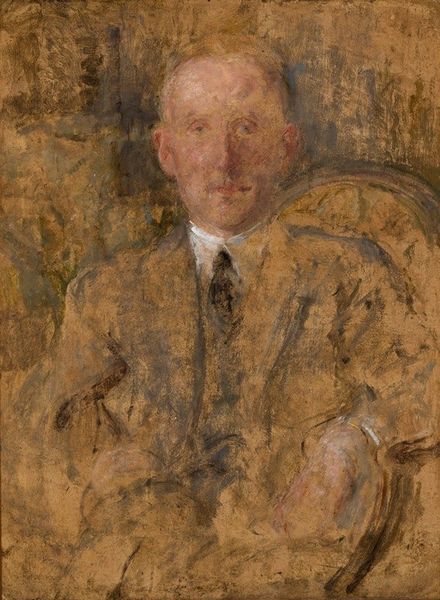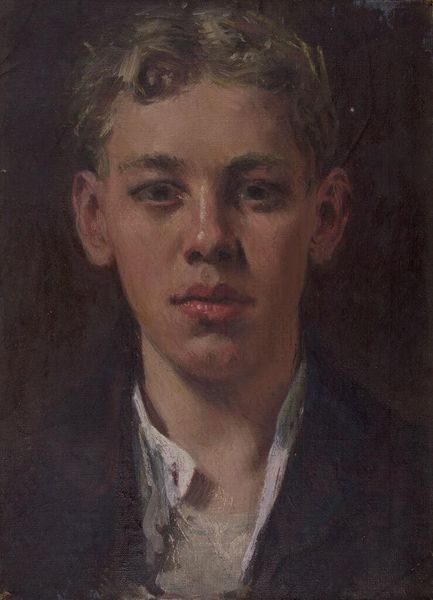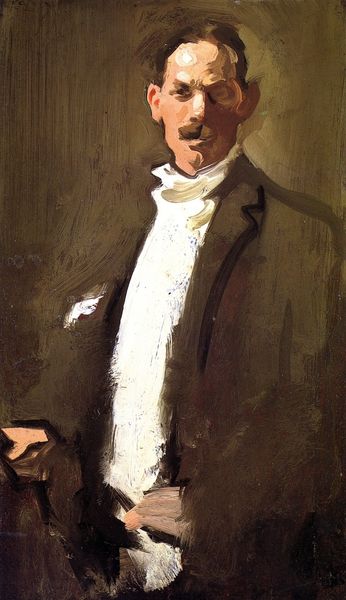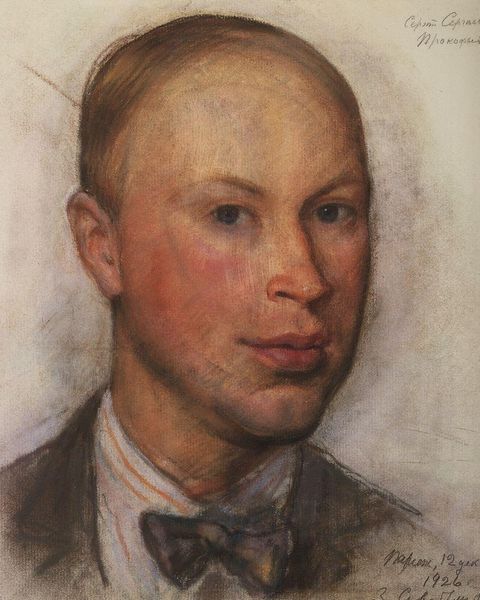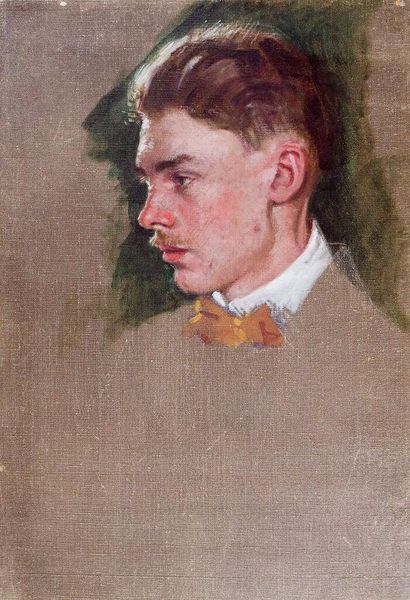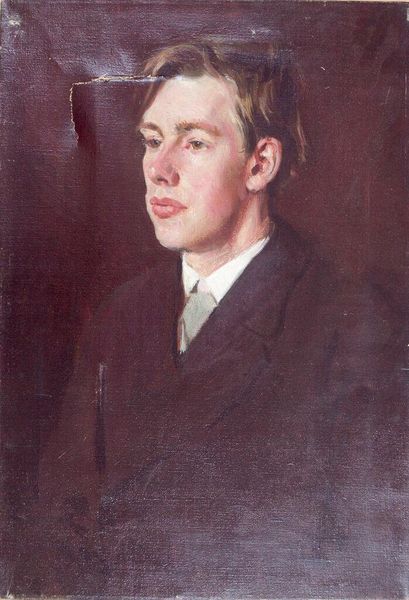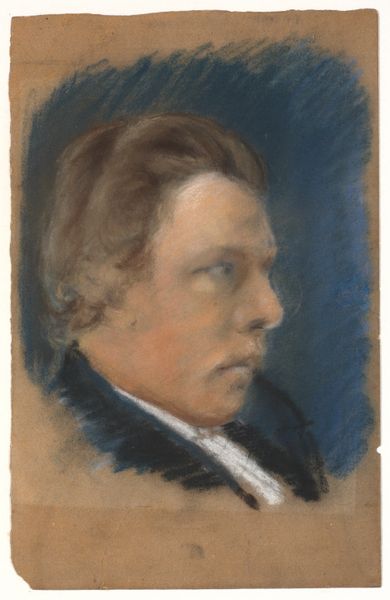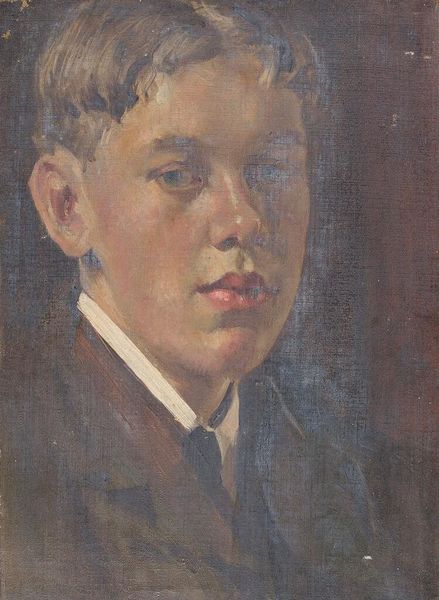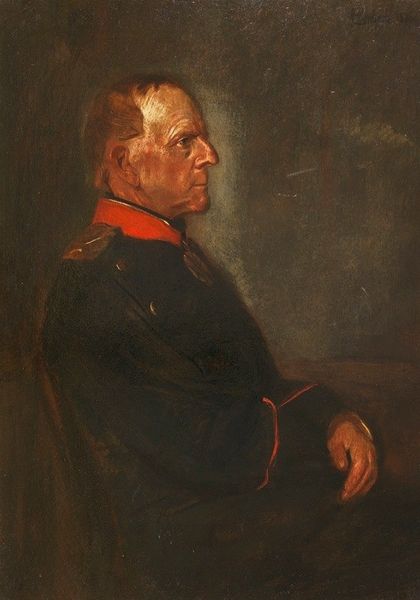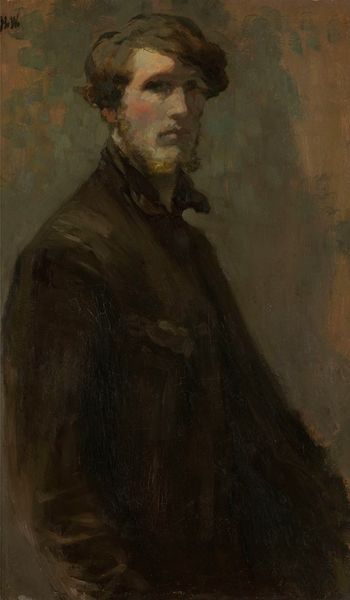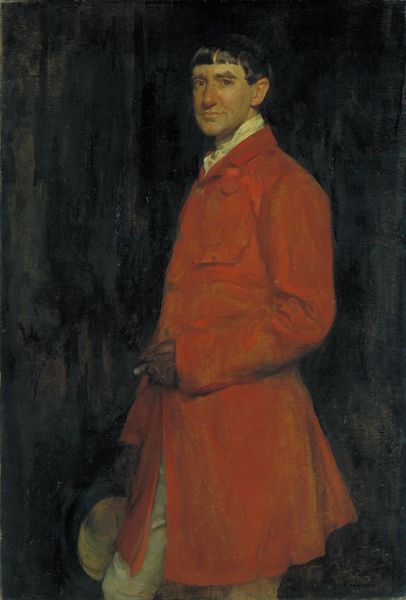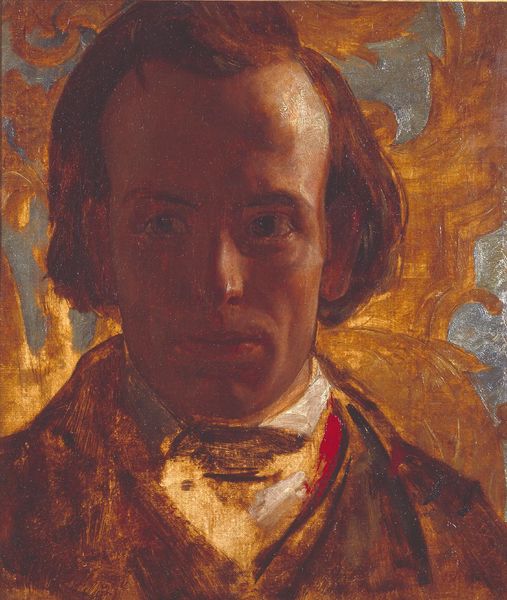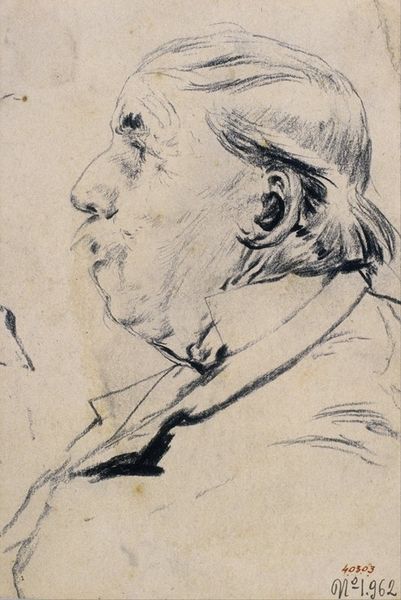
painting, oil-paint, impasto
#
portrait
#
figurative
#
painting
#
oil-paint
#
oil painting
#
impasto
#
ashcan-school
#
portrait art
#
realism
Copyright: Public Domain: Artvee
Curator: Up next, we have Robert Henri’s “George Luks,” an oil painting that encapsulates a powerful moment in early 20th-century American art. Editor: I'm immediately struck by its boldness. The impasto technique, with those thick strokes of paint, really gives it a raw, almost confrontational feel. The way the light hits the face makes him seem… intense. Curator: That intensity is definitely there. Henri and Luks were central figures of the Ashcan School, a movement that sought to depict the gritty realities of urban life, especially working-class people, pushing back against the art establishment’s preference for more genteel subjects. Consider the time and the subject here - Luks, a fellow artist of the period and circle. Editor: So, painting Luks wasn’t just about capturing his likeness, but about making a statement about who deserves to be represented in art. Was it like an assertion of a counterculture aesthetic? Curator: Exactly. Luks' own work often portrayed ordinary people and street scenes. So in this portrait, we are really looking at one artist celebrating another, while simultaneously defying the conventions of what art was supposed to depict and who it was supposed to depict. Henri was actively democratizing the space of who belonged on the canvas. Editor: You can feel that rebellion. Look at the almost crude application of paint; it lacks that polished, refined quality of traditional portraiture. Instead, there is an air of immediacy as if the image had to be caught quickly. It defies elitism, which comes through clearly. Curator: Precisely. Henri aimed to capture the vitality of modern life, and by extension, the people who lived it, so painting in this vigorous manner suited his goal perfectly. Editor: Looking at the light again, notice how it really emphasizes his facial structure and brings forward the narrative of raw realism, but perhaps also a celebration of masculinity and identity that counters more delicate portrait traditions? Curator: It absolutely does. Through "George Luks", Henri offers a commentary on representation, power dynamics, and ultimately, artistic integrity. It serves as a challenge to the traditional canon. Editor: A lasting challenge indeed, offering viewers a gritty perspective, even a century later, as art practices have continuously redefined norms. Thank you.
Comments
No comments
Be the first to comment and join the conversation on the ultimate creative platform.
